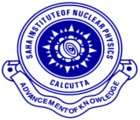Speaker
Description
Barrow modified the entropy relation for the black hole horizon, as $S \sim A^{1+\frac{\Delta}{2}} $, by taking account of the quantum corrections at the black hole surface, where the exponent $\Delta$ ranges from $0\leq \Delta \leq 1.$ In the cosmological context, we adopted this entropy and defined dark energy termed as Barrow holographic dark energy (BHDE) using the holographic principle with Granda-Oliveros scale as the IR cut-off. We treat BHDE as a dynamical vacuum having a constant equation of state $\omega_{\Lambda}=-1$, we also investigated the late acceleration of the universe, with BHDE and dark matter as components, and the interaction between them has been incorporated phenomenologically. In the absence of interaction between the dark sectors, we found that the model predicts a $\Lambda$CDM-like evolution of the universe with an effective cosmological constant. Further, we constrained the model parameters using the combined data set of Supernovae type Ia Pantheon data (SN Ia) and observational Hubble data (OHD). Additionally, we analyzed the thermodynamics of the universe by concentrating on the generalized second law of thermodynamics and entropy maximization and found that the generalized second law is valid and the model predicts an end de Sitter phase of maximum entropy.

